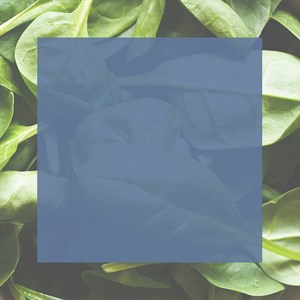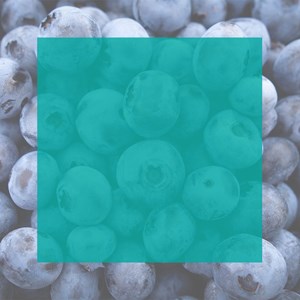Colloidal Silver
Silver is unique among antimicrobial agents in its broad spectrum of action (the silver protein form) has shown to effectively kill micro-organisms including many viruses. This form of silver has been claimed to kill some 650 different disease organisms. Some forms of oral silver are known to cause depletion of the body’s Selenium reserves.
A note regarding Colloidal Silver
Products that are clear in colour indicate a relative lack of Silver. Some companies charge excessively for their colloidal silver products that may contain very little (if any) actual silver. This occurs when colloidal silver is produced by running a weak electric current through a piece of silver in water. The most thoroughly dispersed colloidal silver products are yellow or brown in colour, not clear.
Ideally, colloidal silver products should be provided in amber glass bottles in order to retain the negative electrical charge of silver. Plastic bottles do not hold the negative electrical charge.
The population of detrimental bacteria within the digestive tract may "crowd out" beneficial bacteria, indicating that a course of Probiotic would be most sensible.
I am also aware that the information here is known to many but it is offered as a reminder
Eric Llewellyn
The information in this email is intended to offer a partial guide to some of the immune system building that we all can consider
Viral infections and immune system boosting nutrients
It was previously believed that Vitamin D3 was toxic at doses of greater than 1,000 IU per day, however recent studies have refuted this. One study found that doses of 4,000 IU of Vitamin D3 per day were safe and did not increase serum Calcium levels. Another study found no adverse effects using doses of 10,000 IU of Vitamin D3 per day and calcification did not occur until daily doses of 40,000 IU were used.
Generally, the prevalence of Vitamin D deficiency is directly related to the amount of sunlight exposure – this is influenced by the latitude of each geographical location, and the season of the year:
In Northern America, approximately 55% of hospital inpatients and 65% of nursing home residents have Vitamin D deficiency. Approximately 40% of the overall population in the USA have vitamin D deficiency.
In Australia, approximately 76% of elderly nursing home residents and 23% to 43% of young adults have been found to have marginal vitamin D deficiency.
The Food State vitamin D has the active metabolites which normal D3 does not.
There is no advantage in taking Vitamin D in divided doses during the day.
Once-daily dosing is usually adopted for convenience. For circadian rhythm reasons, supplemental Vitamin D should be taken morning through midday
A note regarding vitamin D and magnesium
A high intake of Vitamin D as a standard supplement can increase the urinary excretion of magnesium. On the other hand, vitamin D in non-excessive doses or with the active metabolites increases the body’s absorption of Magnesium
Vitamin D Intake
It is suggested that the Food State vitamin D can be considered helpful is 2,000 iu daily to help with the incidence of colds and influenza.
To calculate the metabolic response to the effect that 50,000iu of isolated vitamin D can achieve, is not only complicated, it requires a blood test for each person.
Selenium deficiency may increase susceptibility to infection from viruses. Selenium deficiency is associated with increased virulence of a range of viral infections according to many studies. A deficiency of selenium has been shown to inhibit resistance to microbial and viral infections
Selenium and Flu
Selenium may inhibit the ability of influenza viruses (which cause influenza) to mutate to more virulent forms that worsen the symptoms of existing influenza. Selenium may also directly inhibit the replication of influenza viruses.
One study concluded (The Federation of American Societies for Experimental Biology).
"Because flu virus mutations create new virus strains each year, it becomes virtually impossible for the body’s immune system to develop a permanent defence. However, taking adequate amounts of selenium can prevent those mutations from occurring. Researchers exposed two groups of laboratory mice to a relatively mild flu virus strain (influenza A Bangkok), which also infects humans. Influenza viruses infecting selenium-deficient mice developed 29 mutations, which led to greater virulence. In contrast, selenium-replete mice experienced no mutations in the infecting virus and had milder symptoms".
A Selenium note
Most celiac disease patients are found to be deficient in selenium
Selenium deficiency
Selenium is deficient in most soils worldwide (it was washed out of the upper layers of soil in most regions during the ice ages). The average daily intake of selenium in the UK is 29 - 36 micrograms per day. The optimal daily allowance (ODA) of selenium (for adults) is 200 - 300 mcg per day
Food State selenium is 200mcg-The Food State Antioxidant with Q10 has 100mcg selenium and 10mg Q10. Selenium is in the Food State multivitamin and mineral complex at 50mcg.
Beta Glucans
Beta Glucans (1:3-1:6) can suppress many types of viruses (via the ability to activate macrophages). The Beta 1,3 Glucan attaches (via a specific Beta 1,3 Glucan receptor located on the surface of macrophages) to the cell membranes of macrophages and activates them.
Beta-Glucans are a constituent of the of Food State yeast grown minerals and the Vitamin B complex, furthermore Beta Glucan (1:3) has been shown to help suppress many types of detrimental yeasts
The usual therapeutic dosage of Beta 1,3 Glucan for the treatment of immune system ailments is 7.5 - 10.0 mg per day.
The foodstate Beta 1:3-1:6 Glucans provide 200mg. The Beta 1,6 Glucan is also considered to activate macrophages.
Alpha-linolenic acid
The respected researcher Udo Erasmus states that "Alpha-linolenic acid appears to retain oxygen in cell membranes. This action permits oxygen to act as a barrier to viruses (which cannot thrive in the presence of oxygen)".
A note regarding Alpha-linolenic acid and prostate Cancer.
A review of several peer reviewed studies of "single" Alpha-linolenic acid concluded that "this study therefore does not support the hypothesis that intake of marine n-3 PUFAs might protect against prostate cancer, but lends support to the deleterious role of ALA in the development of prostate cancer. Another study concluded that "Increased dietary intakes of ALA may increase the risk of advanced prostate cancer".
The Food State Essential Fatty acid complex supplies Alpha-linolenic acid in a complex combination with Oleic acid, Linoleic acid, Palmitic acid, Stearic acid and
mixed tocopherols,
Vitamin C has been shown to inhibit the growth of viruses both directly and indirectly. Researchers found an increase in antiviral immunity after a 2 week supplementation. Vitamin C antiviral activity is considered to be due, in part, to enhanced interferon production
Standard ascorbic acid (supplemental Vitamin C) in high dosage has been shown to reduce the body’s absorption of copper, selenium, iron and vanadium. As ever, foodstate is the important form.
A note regarding Ascorbic acid and Iron.
Vitamin C reacts with ferric iron (oxidized iron) to form ferrous iron (reduced Iron) - ferrous iron, in turn, reacts with hydrogen peroxide to form Hydroxyl Free Radicals.
Coenzyme Q10 helps increase the body’s resistance to viruses. Coenzyme Q10 helps enhance and indeed potentiates the activity of the function of macrophages and stimulates the activity of phagocytes.
A note regarding Q10
The body’s ability to absorb Coenzyme Q10 declines in tandem with the aging process, the body’s ability to convert Co-enzymes Q1 - Q9 into Coenzyme Q10 also deteriorates in tandem with the aging process and the body’s ability to produce endogenous Coenzyme Q10 from its nutritional precursors declines in tandem with the aging process.
Endogenous Coenzyme Q10 synthesis begins to decline after the age of 20 and brain levels decline markedly after the age of 50. Elderly people have only 50% of the levels of Coenzyme Q10 as those of young people.





